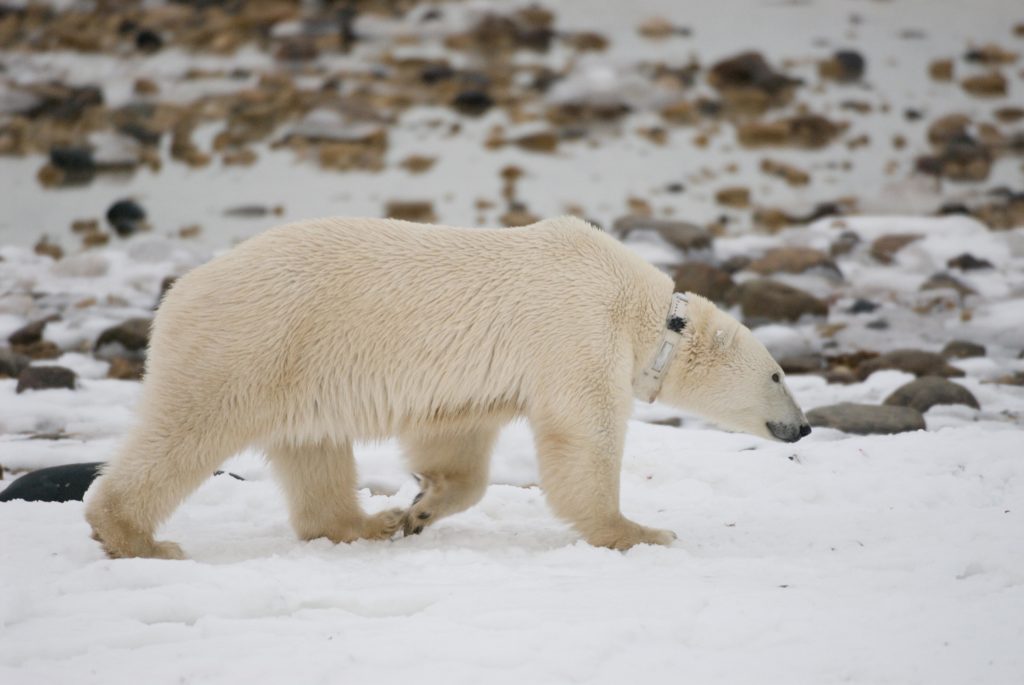Just outside the remote town of Churchill, Manitoba, a male polar bear ambles northwards. Full-grown, he’s spent the summer on land, eating nothing – his main food is seal, found on the ice of nearby western Hudson Bay. And now, as fall turns to chilly Canadian winter, that sea ice is re-forming – and our bear is hungry.
But this isn’t your average Manitoba polar bear. Watched carefully by researchers in Manitoba and Alberta, this bear is about to give six months of incredibly important data: where he’s going and, by extension, what he’s doing as he hunts. He’ll provide this data through a tiny tag in his ear, equipped with a thin antenna that sends his location via satellite to scientists in the Sea Ice Ecology Project.
And Point Defiance Zoo & Aquarium is helping them.
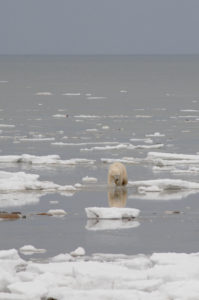
Crucial Data
As climate change intensifies, polar bears are increasingly threatened. These massive mammals depend on sea ice platforms for catching the seals that are their main source of food. And through a portion of their range, polar bears live on sea ice year-round. But in western Hudson Bay, the sea ice melts entirely during the summer. The bears are forced ashore for extended periods and, without their natural prey, must fast for up to five months. As ice melts earlier in the summer and freezes later in the fall, the bears spend more time on the mainland, looking for food and potentially coming into contact with human settlements.
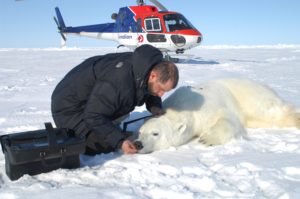
Through The Zoo Society’s Dr. Holly Reed Wildlife Conservation Fund, Point Defiance Zoo & Aquarium is helping researchers study these bears by providing funding for ear tags.
Developed for this species, up to 40 tags being attached to bears this fall and next spring will fill a big gap in our bear knowledge – what male and young bears are doing. Until recently, polar bear tracking relied on collars, usable only on adult female bears who have thinner necks and aren’t growing.
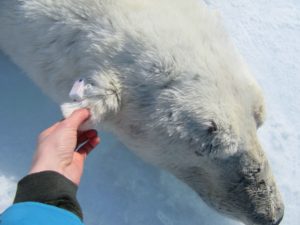
Now, scientists can study males, females and young bears alike to understand their movements, help reduce human-bear conflict and make good conservation decisions.
Partners for polar bears
It’s a partnership that the Zoo has long been a part of. The Canadian researchers work with Polar Bears International, a nonprofit that focuses on polar bear conservation. Point Defiance Zoo & Aquarium is an Arctic Ambassador Center, and works closely with PBI to tell the story of polar bears and the mounting challenges they face in the wild.
We even sent staff biologist Cindy Roberts to Churchill in 2015, as well as Cathleen McConnell from our education department in 2010, to learn more about climate change and how to protect polar bears as their world changes. Arctic Tundra curator Malia Somerville has also visited.
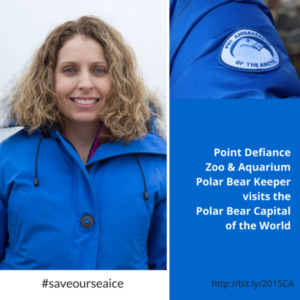
“Seeing polar bears in the wild was a life-changing expedition that fueled my passion to help protect them,” says Roberts, who works with our polar bears and will return to Churchill in 2019-20 as a field ambassador for PBI.
“They are beautiful and amazing apex predators, and I’ve made it my personal ambition as a zookeeper to get visitors excited about taking action to protect them. We can all make a difference, and have polar bears around for many generations to come.”
SEE BEARS: Visit our polar bear.
TAKE ACTION: Help polar bears by being a Polar Bear Pal: don’t idle your car, reduce your energy use and tell all your friends to do the same. Find more actions here.
LEARN MORE: Learn more at the Polar Bears International web page and our Climate Change page.
